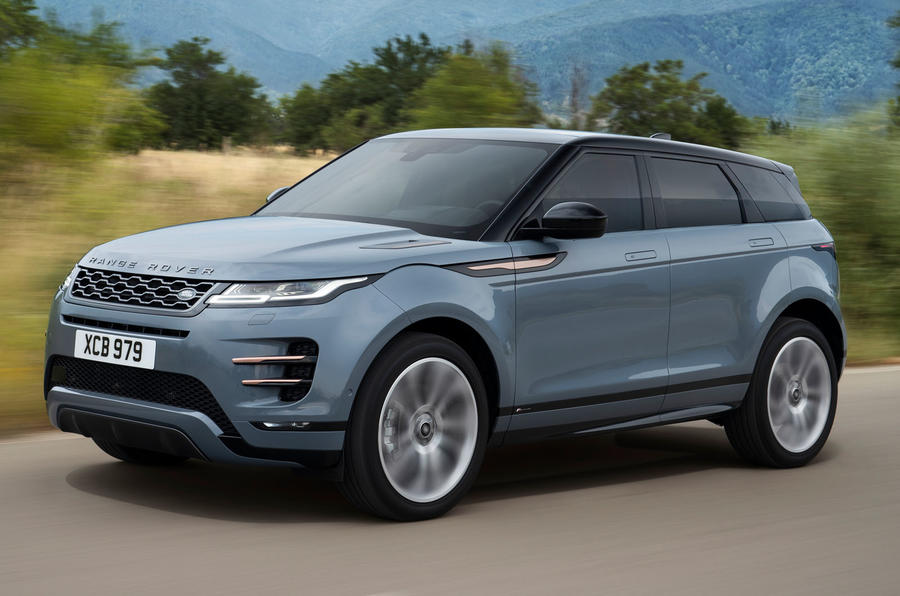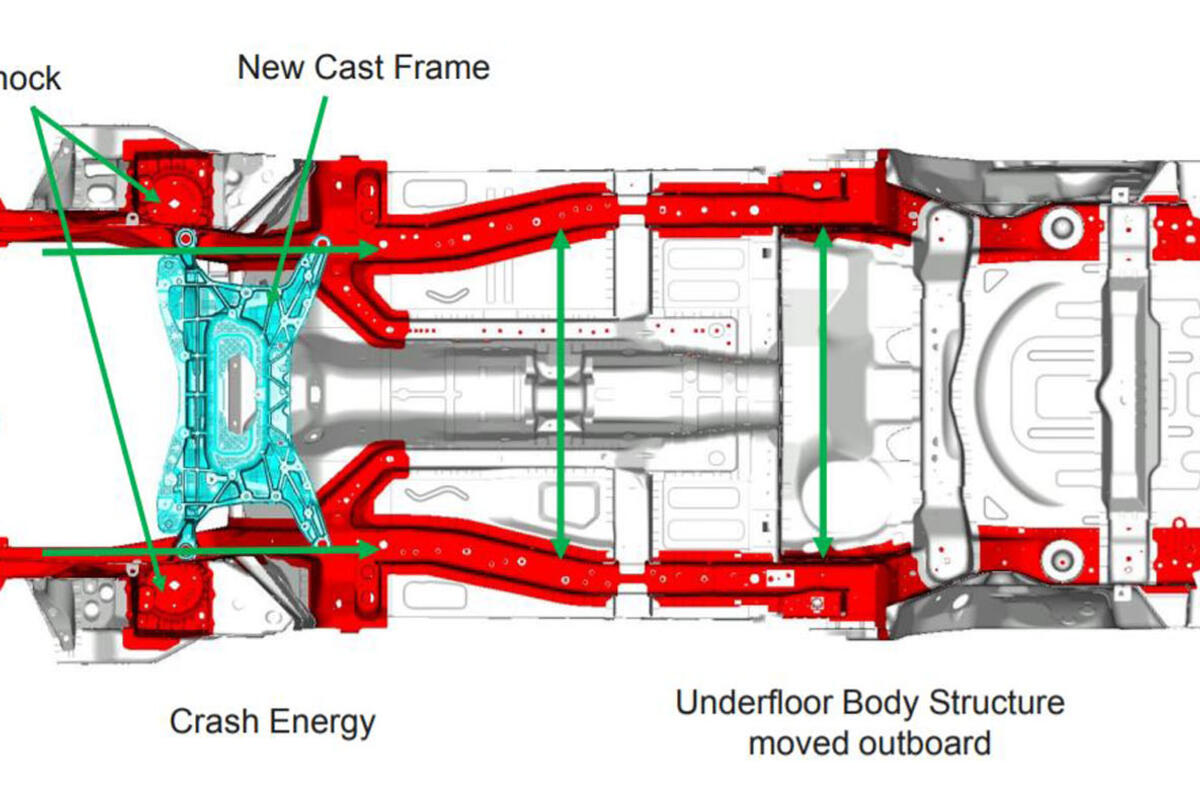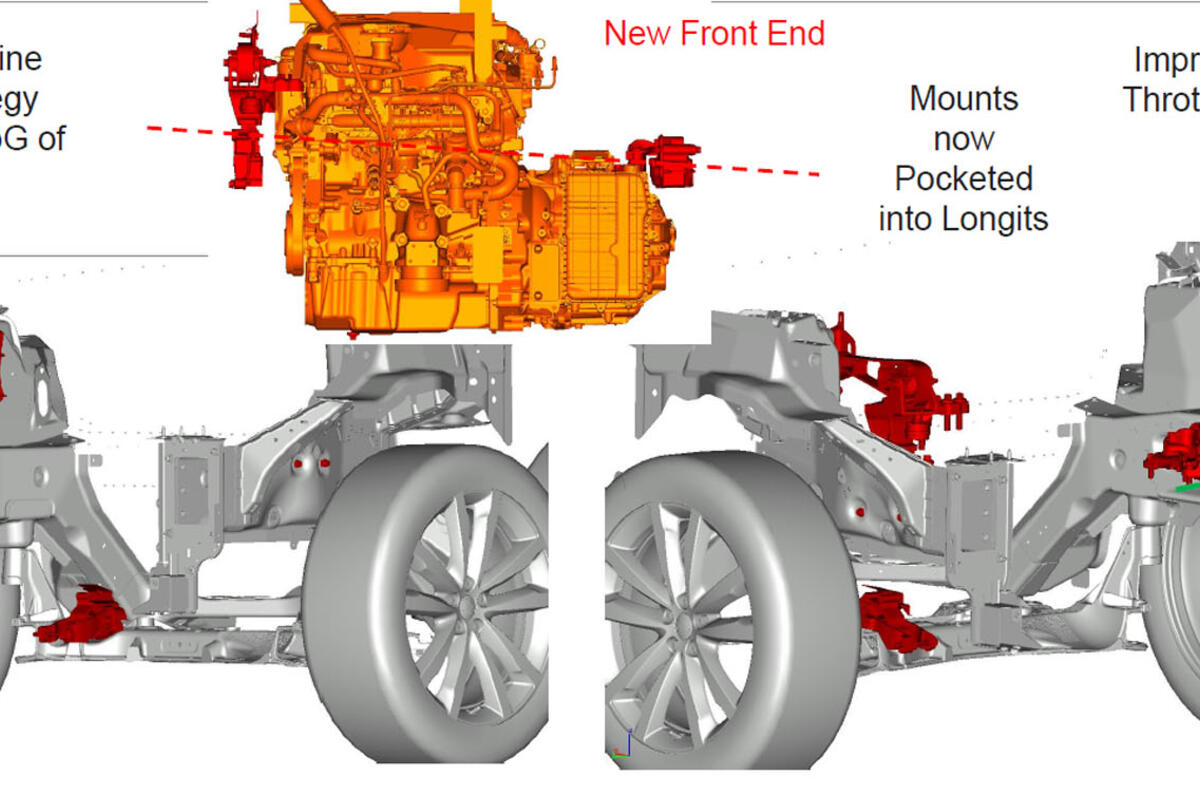This is the challenge: redesign the Range Rover Evoque to accommodate the electric motor, battery pack and control systems of a plugin hybrid drivetrain, meet stiffer crash regulations, carry more equipment and offer more rear-seat room and a bigger boot. And all this within the same footprint.
True, the first Range Rover Evoque (2011-2018) is hardly the world’s smallest car, but that’s an awful lot of extra kit to find room for, never mind teasing out some extra space for back-benchers and luggage. So why stick to exactly the same dimensions and make the task harder?

Because Land Rover’s market research established that owners of the original Evoque were adamant that it should not get any bigger. In fact, the new Evoque doesn’t occupy exactly the same volume of space as the old (it’s 1mm longer at 4371mm, 10mm wider at 2100mm, 14mm taller at 1649mm and its wheelbase, which has no effect on the footprint, of course, is 21mm longer at 2681mm). But it’s very close.
How, then, did Land Rover set about finding the extra cubic centimetres to accommodate these requirements? The process starts, explains vehicle package manager Christophe Sacré, with ‘a statement of intent’. Which is effectively a list of packaging wants majoring on visibility and internal space. They include preserving the driving position but lowering the steering column so that you’re arranged much as you would be in a Range Rover Sport, improving the visibility of the bonnet’s corners, parking the wipers out of sight, improving visibility around the door and interior mirrors, and maintaining or bettering visibility to the rear. In accommodation terms, the objectives were to preserve the original’s front seat space, increase rear room and enlarge the boot, which also had to look visibly bigger.
To understand how all this was achieved, we’re in Jaguar Land Rover’s cave. It’s disappointing as rocky undercrofts go – just an ordinary room in the Gaydon G-Dec technical centre with a large screen at one end, smaller screens to the side and an ageing Evoque seat mounted on a metal podium.








































Join the debate
Add your comment
German cars lol
Trendiness is the real reason for nearly all of western culture purchases. You can apply that to nearly everything on sale. I feel that the days of choosing a product on its capabilities is gone replaced by a need to follow a trend. Clever manufacturers know and control this and increase their profits by selling an acceptable product for a premium price. In the automotive world it’s the Germans that have mastered this. Other manufacturers are forced to emulate this and subsequently make the customer pay higher prices.
I wil believe a 591 litre
I wil believe a 591 litre boot the day I count that many 1 litre bags coming out of one!
There is no disputing its not capable and no doubt is a bit better than the 'old' one in near all respects. But I tried pricing one up on our lease site. A basic 180bhp 4wd model didn't come in too bad initially, high residuals help. But by the time I added a lot of stuff I would get as standard on a mid range CR-V hybrid (also with 180bhp, 4wd and a lot less tax!) it had hit a ludicrous £45K and the lease was eyewatering. Yes I would be more 'trendy' but I would be no more comfortable, no faster, no more space, no less not stuck in a bit of UK snow.. for £10K+extra tax more.
Same old, same old
As we all know, it's the same footprint because it's the same tank-heavy platform. That was the first mistake. The second is launching a vehicle that interior tat aside looks rather too similar to a design already found on social housing estates throughout the land. An old idea built on old technology will enjoy the sales it deserves.
James Dene wrote:
"the same tank-heavy platform" ?!
Read it again. SLOWLY.